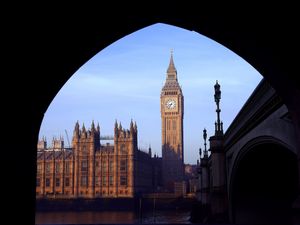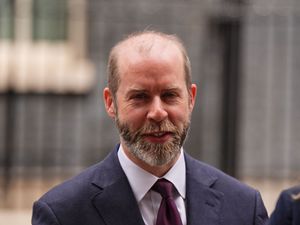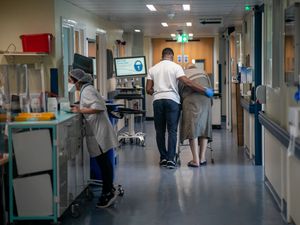How do UK elections work?
The first past the post system will decide which MPs take their seats in Westminster.

What form of voting does the UK use?
There are different types of voting systems for different types of elections in the UK. Elections to decide who becomes an MP – either in general elections or by-elections – are decided on the first past the post system (FPTP).
Other systems either in use now or in recent history include alternative vote, supplementary vote, single transferable vote, additional member system, and closed party list. In this article we will focus on the FPTP system.
There are many critics who dislike the system, but in a 2011 referendum to replace it the alternative vote option was rejected by 67.9% of those who took part. The turnout was 42%

How does FPTP work?
The first past the post system works by splitting the country into different areas, known as constituencies.
There are 650 constituencies and each of these chooses its own MP.
In a general election all 650 have their own vote on the same day to select their MP. If only one, or several but not all, of the constituencies hold an election because their MP has resigned, died or been removed via a recall petition, it is called a by-election.
Because only one MP is allowed per constituency, each election is a winner-takes-all vote. That means the person with the greatest number of votes in that constituency wins the seat and becomes one of the 650 MPs in the House of Commons.

How is a Government formed?
Many of the candidates, and generally a vast majority of those who win, are affiliated with a political party. It is possible for candidates to stand as independents, and in some cases MPs who were elected under one party can defect to another or become independents.
On May 22 2024 when Rishi Sunak called the General Election, there were 17 independent MPs in the House of Commons. However, each of these had previously been a member of a party and had either been suspended or left of their own choice. All MPs elected at the 2019 general election represented a political party.
The party which has the most MPs when all the ballots have been counted is generally considered the winner and gets invited by the King to form a Government. If that party has more than half of MPs (326) they can form a Government alone.
While in theory the majority needed is 326, in practice is a little lower because Northern Irish party Sinn Fein, which currently has seven elected MPs, does not take its seats because of the Irish republican principle of abstentionism which means they refuse to take an oath of allegiance to the King, which all MPs are required to do by law before they can speak in debates, vote or receive a parliamentary salary.
The Speaker of the House and their three deputy speakers also do not normally vote. There are also sometimes vacant seats before by-elections are held.
As a result of this, on May 8 2024 the Government needed 320 MPs to maintain its majority in the Commons, according to the Institute for Government.
Once a party has formed a government, that party’s leader becomes prime minister and they select people to form their cabinet.

What happens if no party has a majority in the Commons?
If no one party has enough seats to form a government, this is known as a hung parliament. In this situation it firstly falls to the most-recent previous prime minister to try to form a government if they have been re-elected as an MP.
If they cannot do so it tends to fall to the largest Opposition party to try to form a government.
The party trying to form a government has different options to boost its support. It can try to enter a coalition with one or more other parties who will lend support on key voting issuers. This is what happened in 2010 when David Cameron’s Conservatives formed a coalition with Nick Clegg’s Liberal Democrats.
The party can also try to form a minority government, which relies on one or more smaller parties voting with it.
It can do this by a formal arrangement, such as the 2017 “confidence and supply” agreement between the Conservatives and the Democratic Unionist Party.
It is also possible, although likely more difficult, to form a minority government without a formal arrangement with any other party. In this scenario the government can seek support from different parties to prop it up during various votes.

How are constituency areas set out?
Every eight years the four boundary commissions for England, Wales, Scotland and Northern Ireland review the areas that each constituency covers.
This is done to make sure constituencies are all roughly a similar size in the number of voters who are resident. The most recent review was in 2023 so the upcoming general election will be the first to be held under the new boundaries.
The boundary commissions are independent and non-partisan organisations, so the government cannot influence their proposed redrafting of the electoral map. In the past MPs were given a vote on whether to accept or reject the proposals but this is no longer the case.
The most recent changes have resulted in 10 more constituencies in England, two less in Scotland and eight fewer in Wales. There will be no changes to constituency numbers in Northern Ireland.
Out of the previous 533 constituencies in England only 55 did not see any changes to their boundaries in the 2023 review.
The changes are designed to ensure that the split between constituencies is fairer. This is because all constituencies, whether they have 20,000 voters or 100,000 voters, still get the same representation in the Commons. Therefore it is possible to argue that someone living in the smaller constituency has a vote which is five times more important than that of someone living in the larger constituency.
According to estimates from the Office for National Statistics from December 2022, the smallest constituency was Na h-Eileanan an Iar in Scotland, with a parliamentary electorate of 21,143 people, and the largest was the Isle of Wight with 109,156. The average (mean) was 71,504 people.
The 2023 boundaries mean that constituencies must have between 69,724 and 77,062 voters. There are five exceptions to this rule, all islands, including Na h-Eileanan an Iar and the Isle of Wight.
The requirement is based on the number of voters, not the full population. It therefore does not take account of children, or other people who do not have the right to vote such as some non-British citizens.

How are candidates to be an MP chosen?
Most British citizens are able to put themselves forward to be on the list of candidates in a constituency. Citizens of Ireland and some Commonwealth citizens can also stand.
They have to be at least 18 years old, and some professions, such as serving police officers and civil servants, are barred from standing.
To get on the official list, a prospective candidate must fill out nomination forms and pay a deposit of £500.
If a person wants to represent a political party they need to be selected by that party. Each party has their own selection rules and processes.
In the case of the Conservatives and Labour, both parties whittle down a shortlist of possible candidates in slightly different ways. This shortlist is then voted on by local party members.
Links
UK Parliament – Voting systems in the UK (archived)
UK Parliament – Alternative Vote Referendum 2011 (archived)
The Electoral Commission – How MPs are elected (archived)
UK Parliament – Find MPs (archived)
IfG – Government majority (archived)
UK Parliament – How the UK Parliament works (archived)
UK Parliament – What is a hung Parliament? (archived)
IfG – Hung parliaments (archived)
IfG – 2023 boundary changes (archived)
UK Parliament – Constituency data: electorates (archived – directly downloads file)
UK Parliament – Who can stand as an MP? (archived)
IfG – Conservative and Labour party selection of UK parliamentary candidates (archived)





